Back on the road (27 December 2017) and headed south.
First stop was Archea Olympia, about 65 km south east of Glyfa, to view the site of the original Olympic Games.
It is believed the first Games were held in Olympia in 776 BC (and they continued until 393 AD when a Christian Emperor Theodosius I banned them because he considered them a pagan festival) but most of the archaeological finds that can be seen now at Olympia were constructed during the “Classical” period between the 5th and 4th centuries BC (e.g. the Hippodrome for chariot racing, the Greek Baths for the athletes and, most important, the Temple of Zeus) although the site was further developed during both the Hellenistic period (e.g. the Palaestra for wrestling and the Gymnasium for general training) and the Roman period (when almost everything was Romanised).
There’s not much left of the original buildings now (in 426 AD another Theodosius instructed that as part of a further clampdown on pagan festivals the Temple of Zeus should be totally destroyed – earthquakes and flooding put paid to the rest) but there is an aura here and; the location, the sheer scale of the development and the size of the Temple of Zeus lends the site a certain majesty that, with just a little imagination, it is possible to conjure up a vision of the Archea Olympia at the pinnacle of it’s popularity.
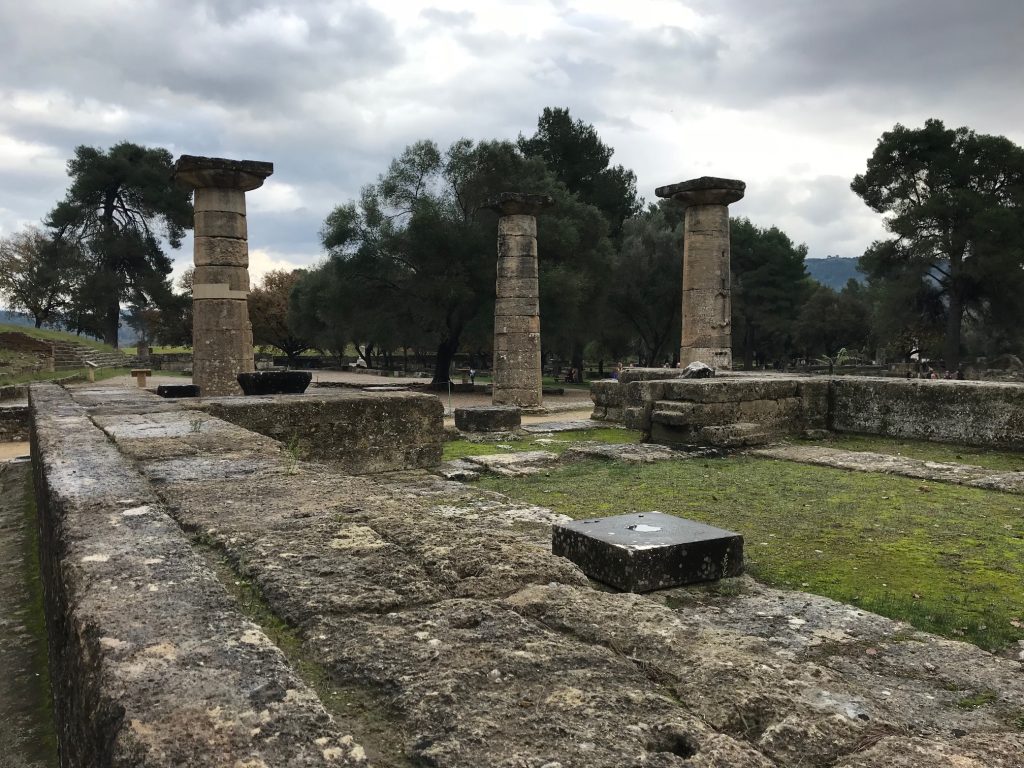
8

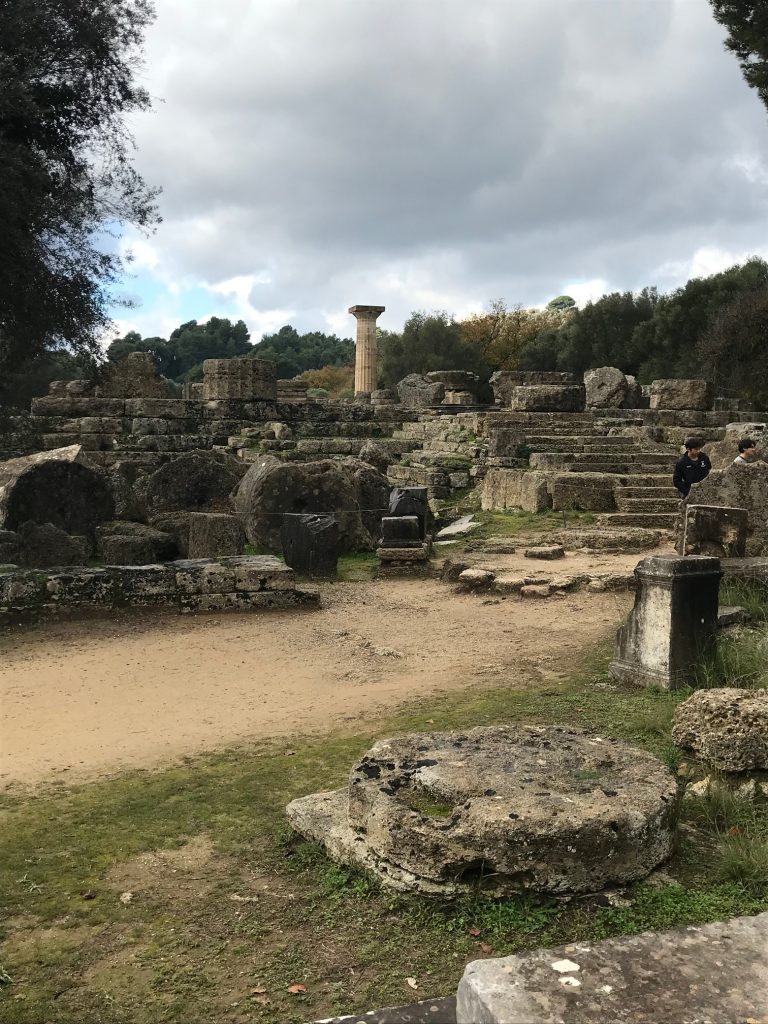
The Temple of Hera (at the altar of which the Olympic Torch is lit for each of today’s Modern Olympic Games) and, in the second and third photographs, the Temple of Zeus. This latter temple once housed a 12 metre gold and ivory statue of Zeus that was one of the seven wonders of the ancient world
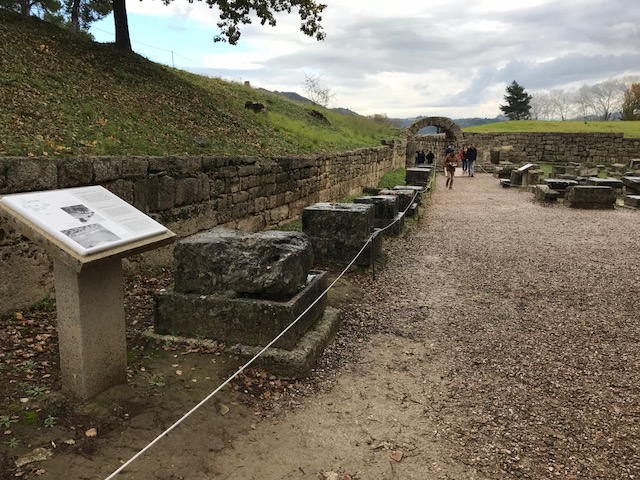
You wouldn’t know it to look at them but the empty plinths leading towards the archway into the Games Arena in the above photo once identified the names and offences and home cities of athletes caught cheating in the Games. The plinths were located at the entrance to the Games Arena to dissuade other athletes from cheating – that is one idea that could be resurrected in the Modern Olympics
I wanted to stay and run (well, jog) a circuit of the Games Arena but a cruise ship had docked at Patras and suddenly the site was being overrun by 30+ coachloads of tourists. It was time to move on.
Somewhere between Skillounta and Kyparissia on the road south to Pylos (my next planned stop) I paused to climb a hill. While driving I had seen what I thought was a “kalderimi” (i.e. a stone mule path that connects many of the mountain villages in these parts) and, having also read that there is an ancient acropolis in the area, I surmised that the kalderimi could lead me to the acropolis. In any event I needed a quiet hike if only to rid myself of the memory of all those cruise ship tourists. Unlike the time at Sivota, I was on the right hill and I found what I was looking for but (a) the kalderimi was nothing more than a seam of lava rock (that cut my trainers to ribbons during the ascent) and (b) the acropolis was surely someone’s idea of a joke (take a look at the photo) and (c) I got drenched when it rained cats and dogs. I really must stop making spontaneous decisions.
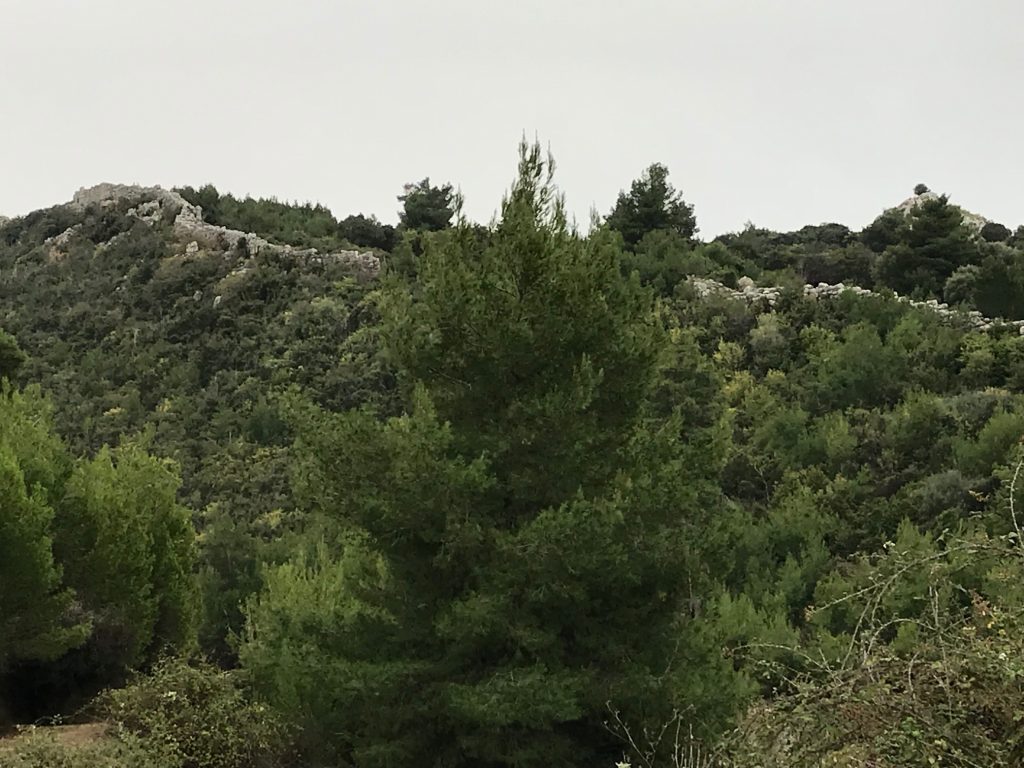
That could easily be a kalderimi snaking it’s way up the hill, don’t you think?
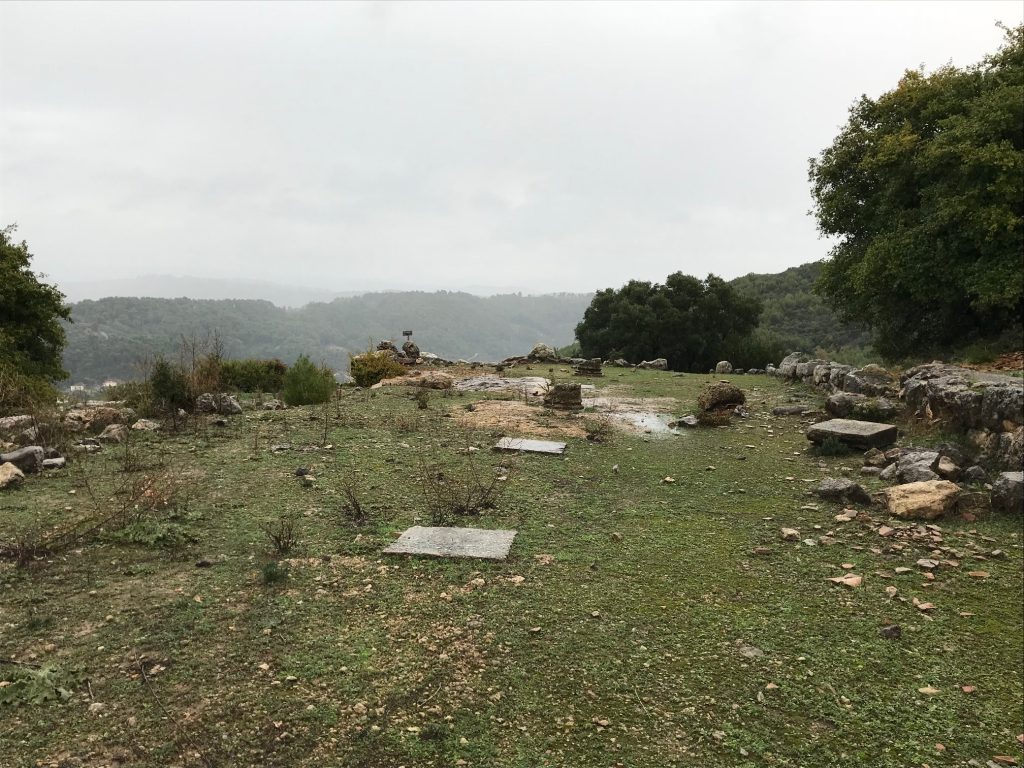
… but if that’s an acropolis, I reckon Theodosius I, II, III, IV and V and all their progeny have been at it
Final stop for the day was Pylos (previously known by it’s Italian name of Navarino), the principal harbour on the Bay of Navarino and about 100 km south of Olympia.
One of the earliest mentions of Pylos is in Homer’s Iliad. He identifies Nestor, who fought for the Greeks against the Trojans, as King of Pylos and the ruins of Nestor’s Palace are but a short distance from Pylos. However, the area is arguably more famous for being the site of two significant naval battles -the first in 425 BC when an Athenian fleet trapped and destroyed a Spartan fleet in the Bay (part of the Peloponnesian War) and the second in 1827 when a combined British, French and Russian fleet entered the Bay and annihilated an Ottoman armada (supposedly to save the fledgling Greek Republic).
I parked up overnight on the harbour with excellent views to the left and right and enjoyed a very quiet and comfortable evening with absolutely nothing occurring in the Bay of Navarino.

The view to the right of the Van
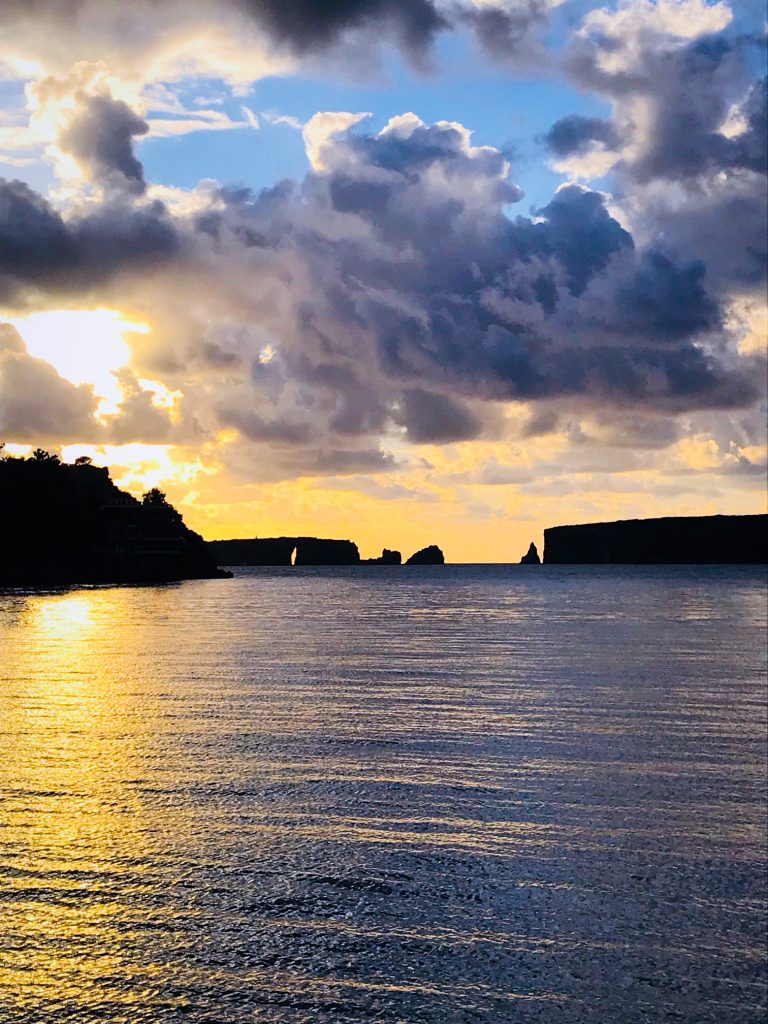
The view to the left of the Van

Pylos Harbour during an evening stroll

